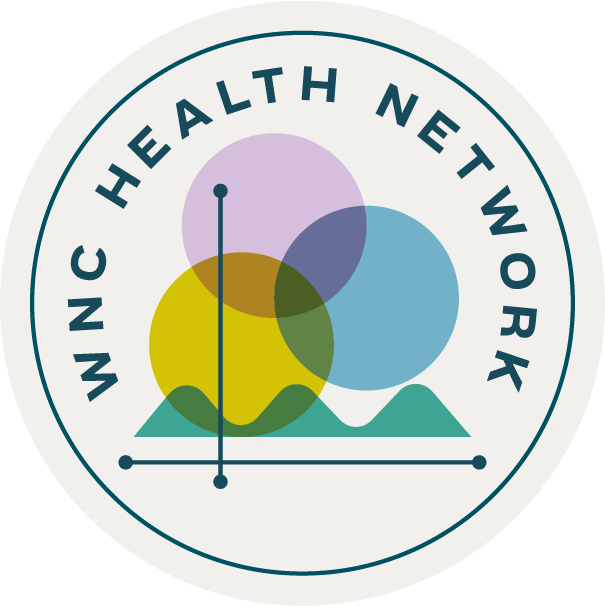Board of Directors
Amy Thompto
Chair
Ben Harrison
Secretary
Patrick Baron
Ameena Batada
Gibbie Harris
Elaine Russell
MISSION
WNC Health Network supports people and organizations to improve health and well-being across western North Carolina.
VISION
Healthy and thriving communities in western North Carolina.
VALUES
Our values are collaboration, action, inclusion, integrity, community, and joy.
Our philosophy:
- We make excellence accessible and affordable
- We use human-centered approaches, building a foundation of empathy with the people we’re designing for and with
- We are committed to co-designing tools, processes, and products with our customers to ensure their unique needs are met
- Whenever possible, we support BUILDING capacity, rather than BEING capacity to sustain locally-led improvements
- We focus on developing processes that meaningfully engage our customers’ communities and partners
Our philosophy and values are rooted in a deep commitment to equity. For us, this commitment begins with an understanding of the history of our region, a responsibility to recognize the ways in which our role in the region can foster or hinder increased equity, and humility in naming and changing our own “how” when our ongoing learning and listening reveals the need.
Our History:
In 1995 , a group of dedicated leaders from hospitals in the region decided to make a difference in healthcare in western North Carolina. They began to identify, explore, and implement opportunities to collaborate among the area’ s hospitals and healthcare systems.
Collaboration started with quality improvement and achieving cost savings and value through aggregation of group purchasing volume. It developed over time to include a regional health information exchange and focus on population health.
In late 2011, the board of directors joined forces with health directors belonging to the Western North Carolina Partnership for Public Health. Together these groups created a steering committee to clarify a process for collaborative health improvement and to guide the implementation of this vision. Today, WNC Healthy Impact continues as a partnership and coordinated process between hospitals, public health agencies, and key regional partners in western North Carolina, working together locally and regionally on a community health improvement process.
In 2013, Capstone Health Alliance was created as a separate, wholly owned subsidiary of WNC Health Network to house the group purchasing program. Having grown well beyond the original 16 – county, WNC footprint, Capstone Health Alliance leadership purchased their organization from WNC Health Network in 2020.
While the essential work of “ doing better together” across the region has remained true throughout the history of WNC Health Network, the hospital leaders recognized that the mission of the organization was now focused on broader, community health efforts. In early 2021, the board of directors voted to change the composition of the board from member hospital representation to a traditional nonprofit board with a wider spectrum of regional partners.
Today, WNC Health Network works with local and regional partners to create healthy and thriving communities in western North Carolina. We do this by collecting, curating, and sharing high- quality health data; supporting and enhancing health communications; building local and regional capacity to plan, facilitate, implement, and evaluate community health improvement efforts; and leveraging our unique regional role to contribute to top regional health issues.










